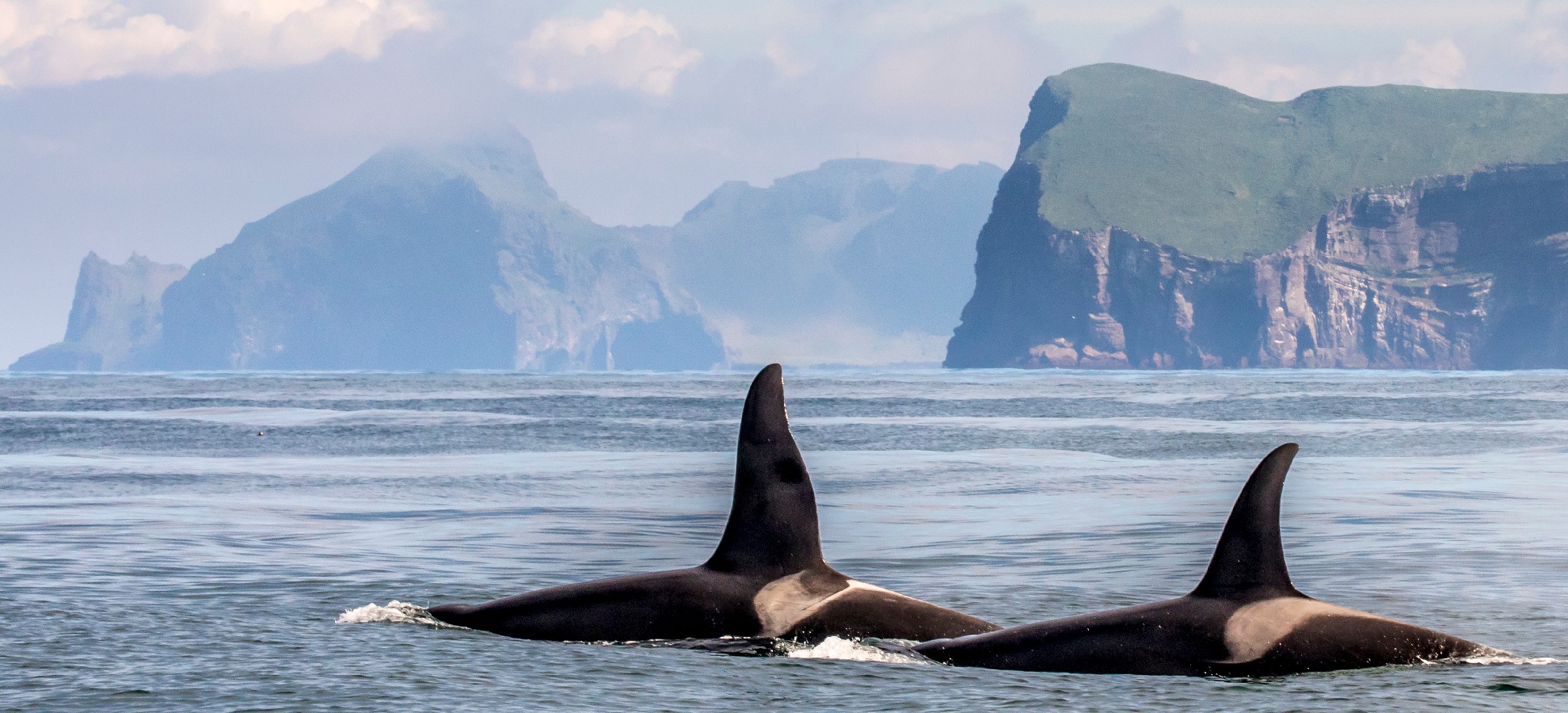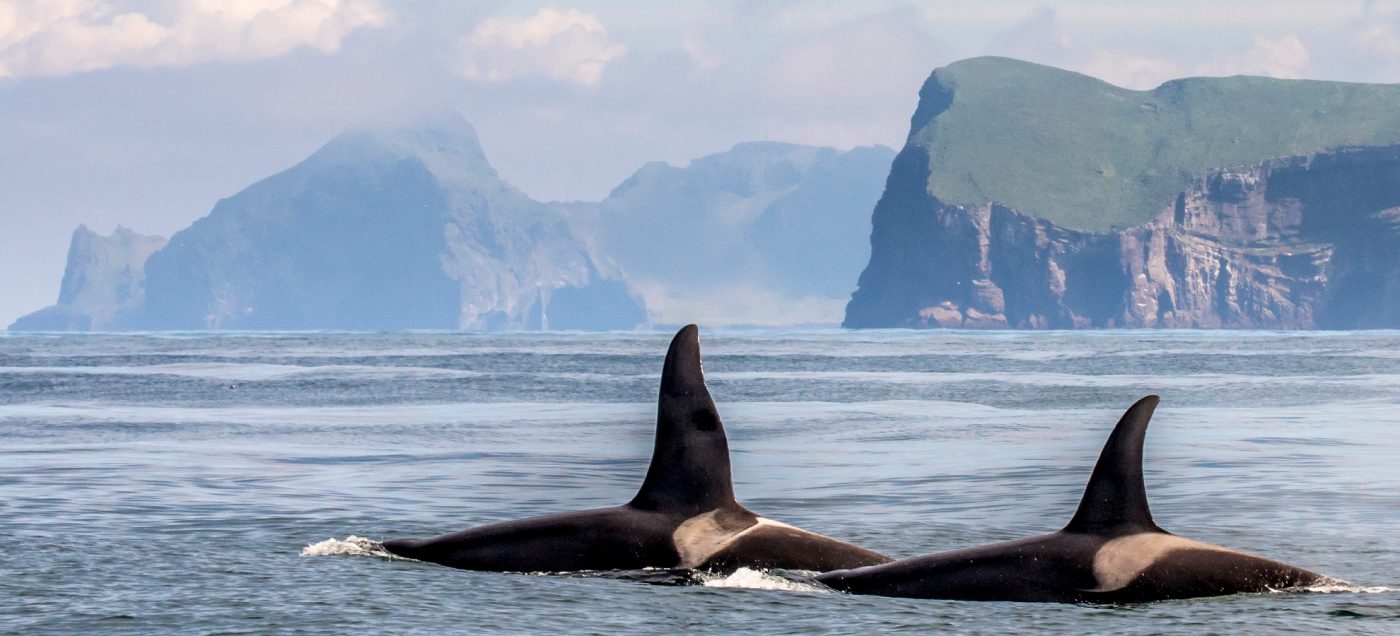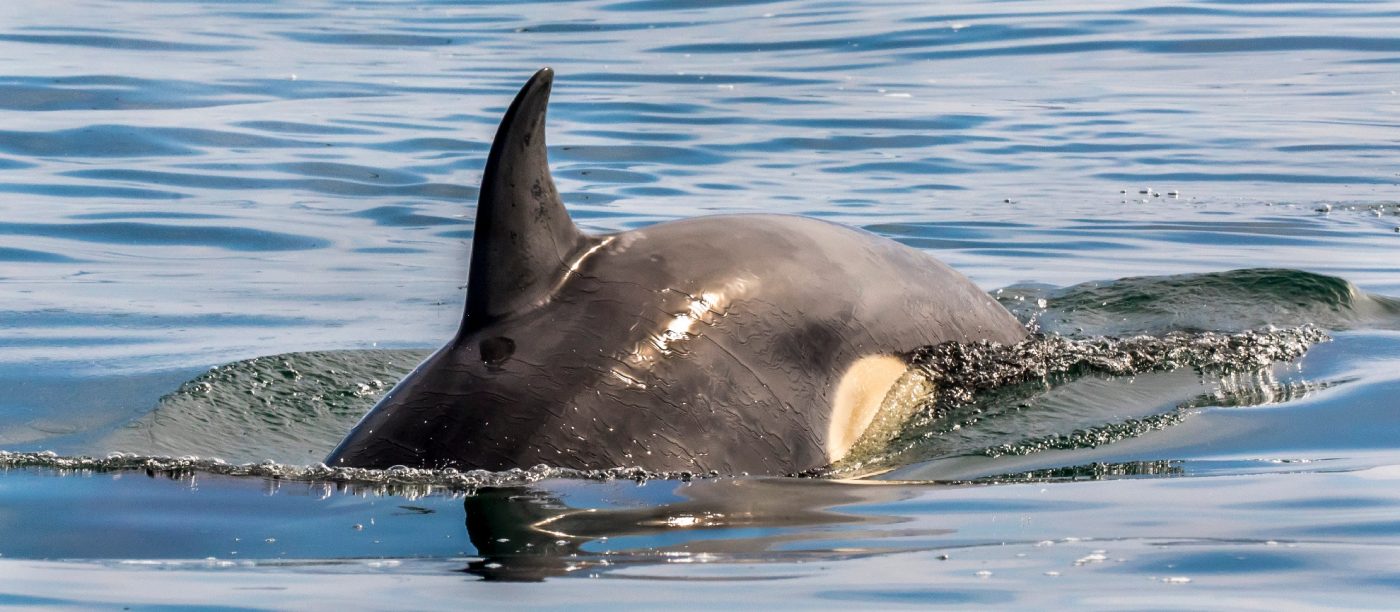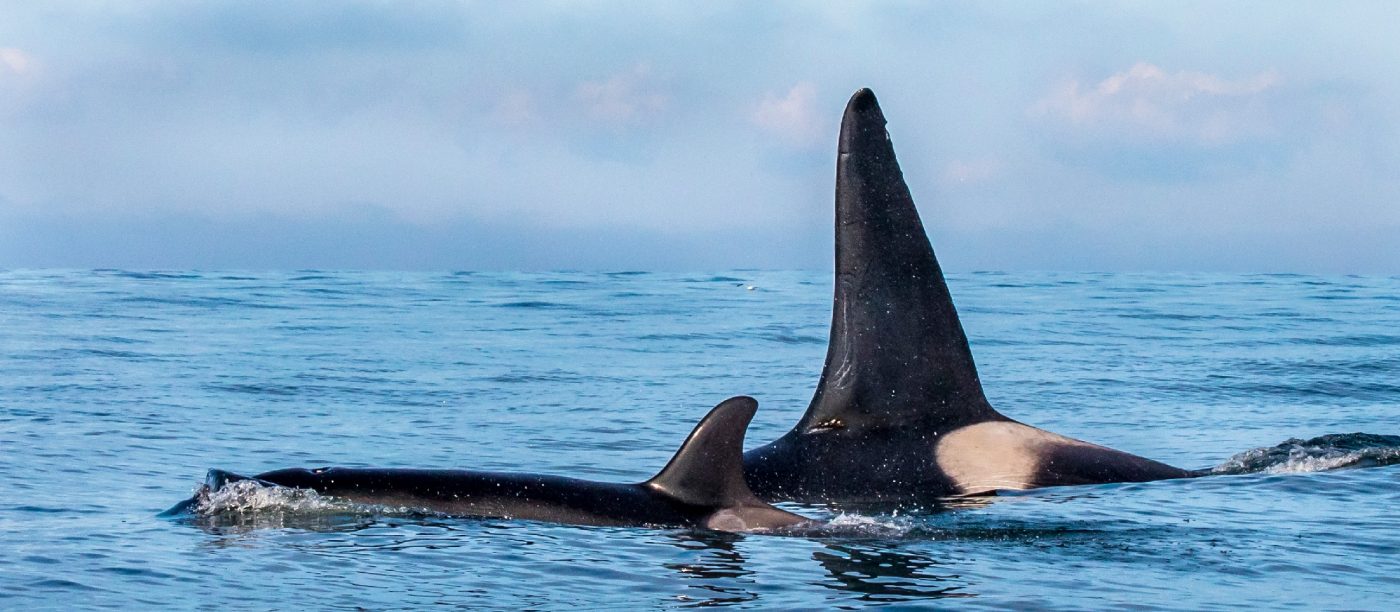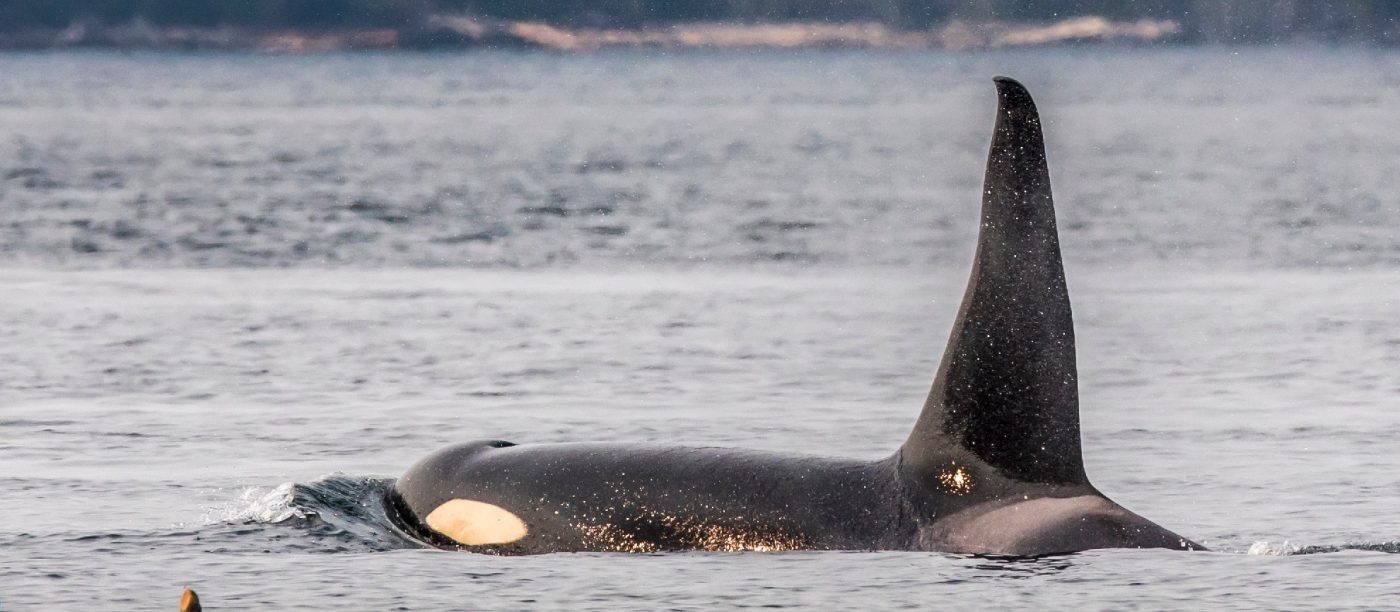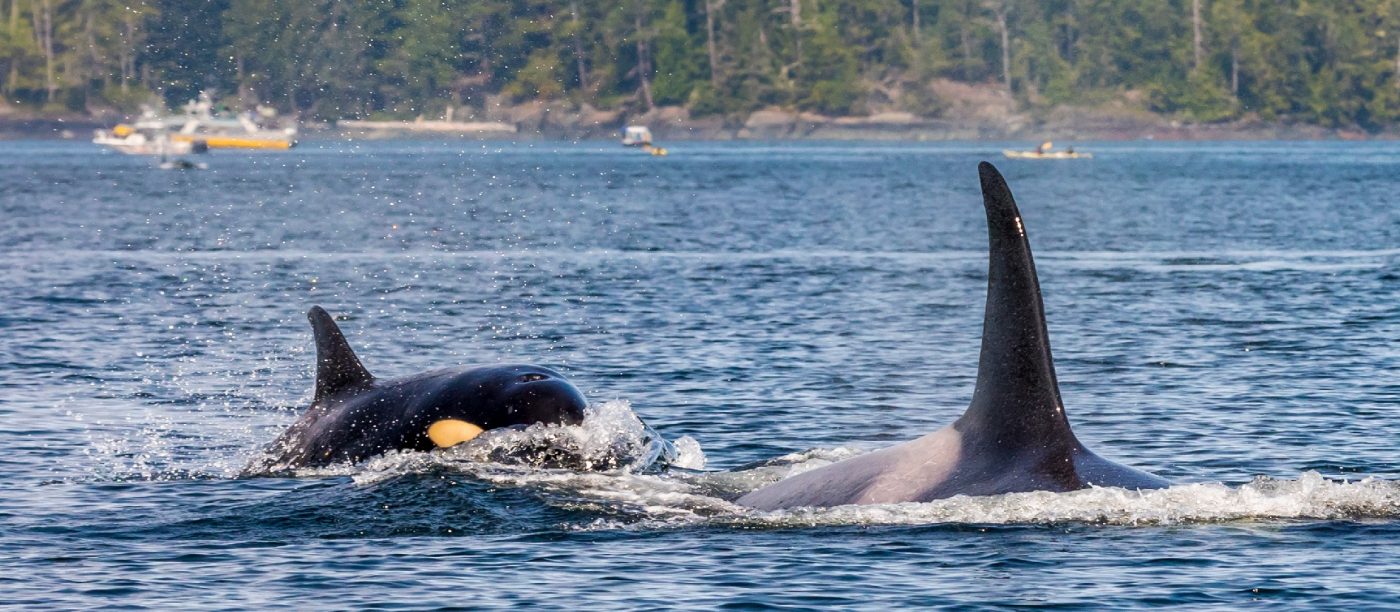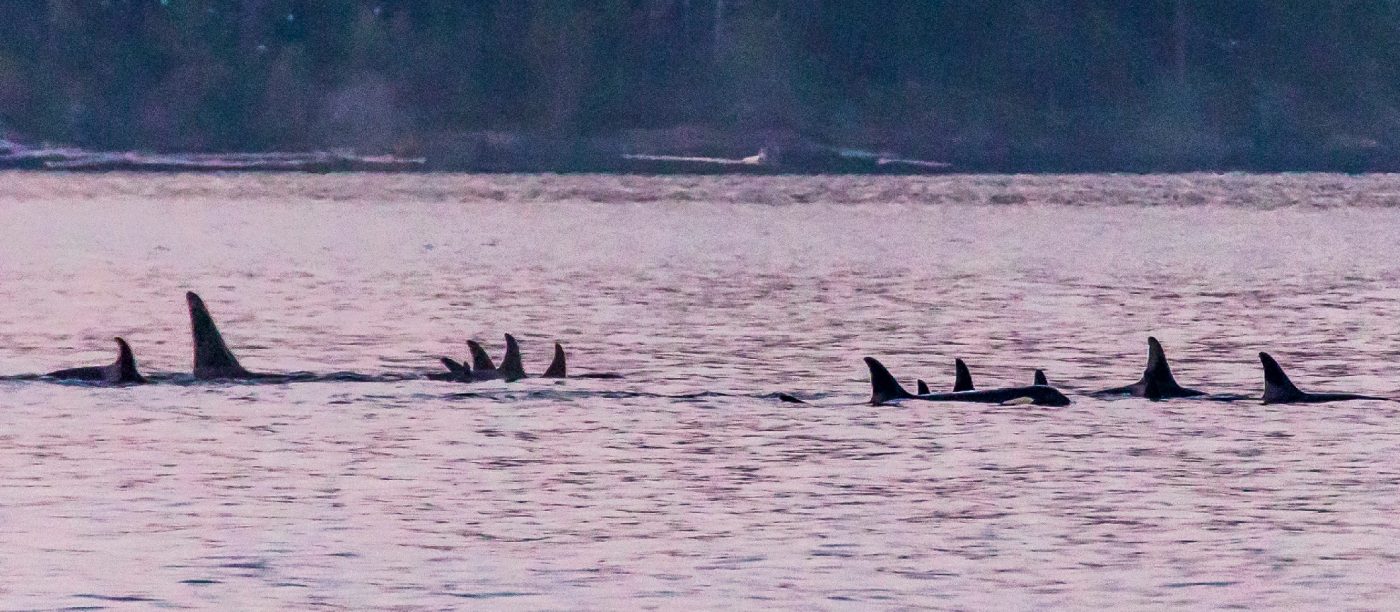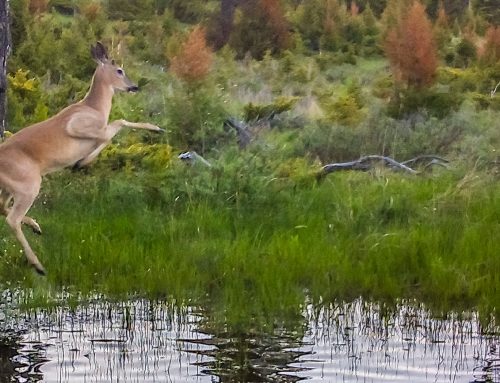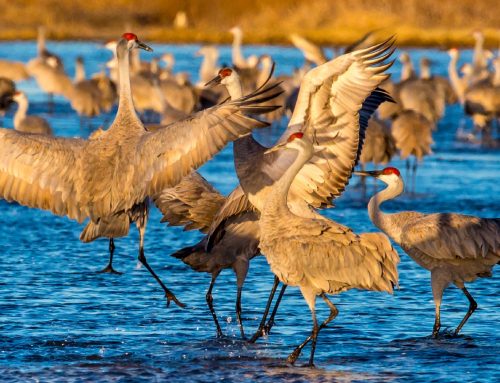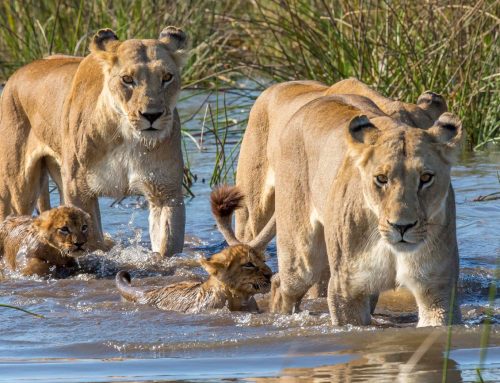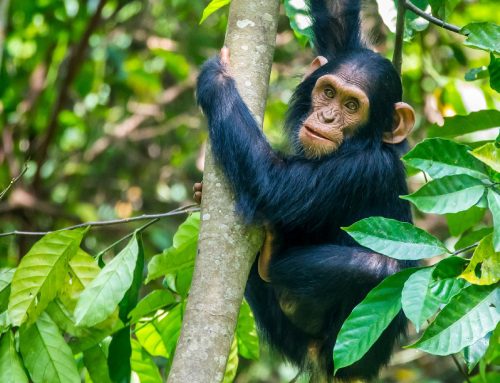Encounters with Killer Whales
The air is fresh and the cool breeze is welcomed on this bright sun-filled day on the ocean. It is July but I am in a dry-suit in a twenty-foot Zodiac in the waters off the island of Iceland. The boat is tracking killer whales (Orca) which are just ahead of us. We are looking photograph and identify these particular whales and also sample what they are feeding on. These black-and- white whales are porpoising on the surface as their large dark dorsal fins rise to daylight and sink into the ocean. Their powerful movements are exhilarating to watch accompanied with loud water spouts after each dive.
Fig. 1 Canon 5D Mk IV 200mm f5.6, 1/1000 sec at f/16, ISO 1600
We get close find a male and female swim together, synchronizing their dives. The male’s dorsal fin reaches high and vertical the female’s is smaller with a curve like the skeg of a surfboard. They make this a valuable environmental photo with the cliffs of Heimaey Island in the background. This type of image has become much more important to me in the advancement of conservation photography.
This research project is headquartered on Heimaey Island four miles off the coast of Iceland. It has a large fishing village with a protected harbor. This is where the whale Keiko, of “Free Willy” movie fame, was airlifted to, in 1998, after his rehabilitation in Newport, Oregon. Part of the reason I volunteered for this research project is see and experience a bit of his story. The killer whales in the North Atlantic are completely different than those off the west coast of North America. Of course, no one knew this fact when he was captured in these waters in 1979. I have been interested in killer whales since 1969 after seeing the killer whale Skana at the Vancouver Aquarium in British Columbia.
Whales can be very difficult to photograph in the ocean. The synchronization of so many components is necessary: timing the whale’s limited breathing at the surface, the height of ocean swells, the moving boat as a platform, photographer’s ability to anticipate, the camera’s ability to focus, and the speed settings. The photographer’s success has been greatly enhanced with today’s digital cameras with high ISO settings possible and rapid-fire shutter bursts.
Fig. 2 Canon 5D Mk IV 200mm f5.6, 1/1000 sec at f/20, ISO 1600
In the early 1970s, Dr Michael Bigg as tasked by the Canadian government in British Columbia to determine the killer whale population off its coast. He discovered that individual killer whales can be identified from a good photograph of the animal’s dorsal fin and saddle patch taken when it surfaces. These photos of whales were organized into a catalog that also illustrated the groupings or Pods that the whales traveled in. The whales in Iceland have also been photo- identified and cataloged.
What has also been learned over more than forty years is that Orcas can have separate cultures around the world. Each region can have differing diets, vocalizations, and distinctive families and social structure. The whales here eat mainly herring which is contrary to those in the Pacific Ocean. Whale research is relatively new to the whaling nation of Iceland. Keiko was indeed an ambassador for his species.
Fig. 3 Canon 5D Mk IV 120mm f5.6, 1/1000 sec at f/18, ISO 1600
This travel and volunteering to be a part of a Orca research is an enhancement of my education and experience with these amazing predators – “wolves of the sea”. I have traveled to British Columbia and Vancouver Island for sixty years having relatives there. When whale watching began in the early 1980’s, on the north island and Johnstone Strait, I was there and captivated. Since that first time I have taken my own boats to watch these whales. They have presented themselves around me, under my boat, spy-hopping their heads far above the surface to check me out. That is when any fears I might have harbored, for my safety, left me.
Fig. 4 Canon 5D Mk IV 800mm f5.6, 1/1000 sec at f/14, ISO 1600
I continue make trips to Johnstone Strait and Robson Bight, “Michael Bigg’s Ecological Reserve”. Launching my own Zodiac, loaded with supplies, from Telegraph Cove I motor six miles south to camp on the beach for up to ten days. I tow a kayak behind so can moor the inflatable out in a small cove and come and go to shore with the kayak. In August there are sixteen foot tides that can make my beach tent area pretty small at high tide many nights.
The whales can come near the kelp beds not far off shore with blows that my ears have become quite keen to. The males (bulls) have paraded by me with their six-foot dorsal fins as I sit close to the water’s surface in my eleven-foot kayak. It is such an enlightening experience the equivalent of hiking in grizzly bear country.
Fig. 5 Canon 5D Mk IV 200mm f5.6, 1/1000 sec at f/11, ISO 1000
Last year I visited OrcaLab on Hansen Island across the strait from my campsite. I was graceful received by a hero of mine – Dr Paul Spong. As young researcher at the Vancouver Aquarium, Spong was creating a battery of tests to determine the visual acuity and mental capacity on the newly capture whale Skana. He was amazed when we realized when his results did not make sense that he actually was the one who was being tested. He grew to know that this creature should not be limited by the tank it had to reside in. He spoke to that and was asked to leave the aquarium. That is when he created OrcaLab to research whales in the wild.
The photo Fig. 5 includes “Springer”, once a two year old lost orphan whale wandering in Puget Sound in July, 2002. She had lost her mother and her pod and created a dilemma for people and agencies on both sides of the border. She belonged in Johnstone Strait with her own relatives.
Spong outlined and help organized a way to bring her back that turned out to be a remarkable success story with hundreds of people involved. She has grown to be a mother with two offspring calves after she was adopted into the extended family – A4 pod A24 Matriline – of her mother. Spong has encouraged us all that these whale have much teach us.
There are three Orca cultures in this area of the Pacific Ocean that are separate. The residents eat almost exclusively fish and most are salmon. The tranesients hunt marine mammals and are much quieter spread apart in their groupings. The offshores hunt larger game including gray whales and squid.
Fig. 6 Canon 5D Mk IV 400mm f5.6, 1/200 sec at f/5.6, ISO 3200
One evening when the sun had set I witnessed the gathering of over twenty whales a “superpod” when several of the “A”pod groups moved south in Johnstone Strait.
David A. Rein


